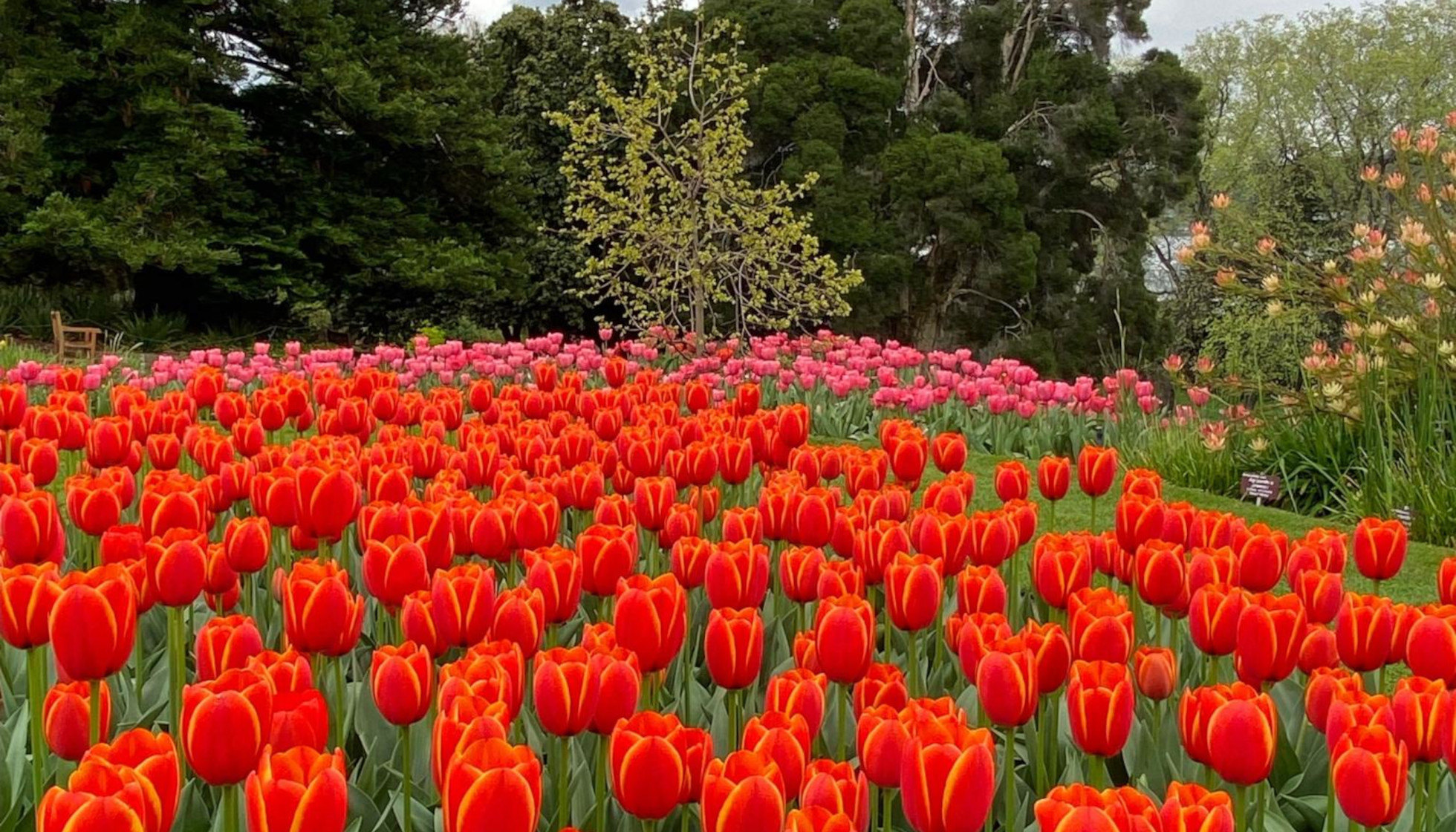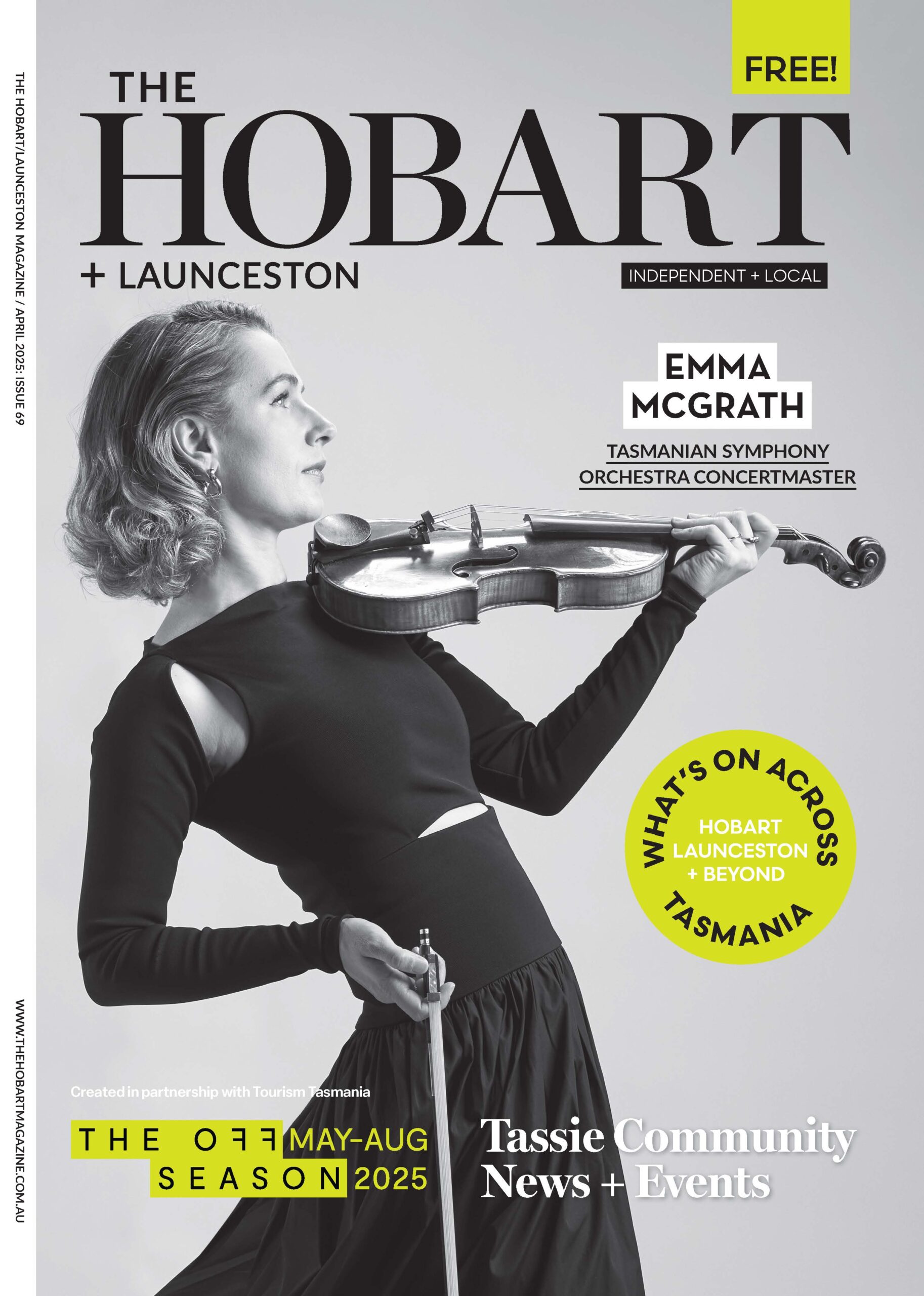Spring into Gardening
by Peta Hen

It’s official. Spring has sprung. To celebrate, we caught up with Royal Tasmanian Botanical Gardens horticulturist, Anne Griffin, to get the top garden- sprucing tips for this time of year.
What are the best vegetables to be planting now? As the spring weather starts to kick in, the soil warms up and it is an ideal time to get fast-growing salad vegetables happening. There are many varieties of different coloured leaf lettuces and plants such as quick-growing salad spinach and spicy leaved rocket. There are many smaller varieties of cauliflower and sprouting broccoli available that can be planted now for harvest before Christmas. Depending on your location (regarding frost) direct sowing of peas into the ground can still occur. If you are into growing plants from scratch, there is still time for planting tomatoes indoors or undercover with small tomato plants planted out once any sign of frost is over, usually from October onwards.
Is there anything we can do now to nourish our soil? Plants need constant nutrition to thrive. I advise the more organic types of fertilising products along with natural compost, usually sourced from your own garden. For soil microbes to thrive it’s best not to leave soil bare, so cover crops can be sown in areas that you’re not yet ready to plant. Digging in compost in areas where you are going to plant crops such as pumpkin or corn is a good idea. Once small seedlings are planted out in the veggie patch, soft straw can be used as a cover-up for the ground. The soil is further nourished as the straw rots down over time.
With shrub borders, there are many pellet- style organic fertilisers available, and these can be liberally spread around the base or dripline of the plants from spring onwards. Make sure that the ground moisture is monitored; we have had a very dry winter in Hobart, so the soil may need additional irrigation to produce the best health for your garden plants. Liquid foliar feeds are another way of ensuring your plants receive the extra nourishment they require.
Cottage gardens are very popular in Tasmania. What native flowers give the same effect? The genus Eremophila is getting more recognition in Tasmanian gardens with many species and cultivars becoming available. If you have welldrained sandy soil, these plants should do well in a sunny spot. Australia has numerous small flowering daisy shrubs such as Rhodanthe, Brachyscome, and Chrysocephalum to name a few. These have repeat flowers and with careful selection, you can have flowers for most of the months of the year.
Ornamental grasses have been part of many cottage gardens for years and Australia has many attractive grasses and similar-style plants to take the place of northern hemisphere plants. Try the kangaroo grass, Themeda, the beautiful dark green Deschampsia or the bluer forms of Poa. If you want climbers for a garden frame, use the free-flowering Hardenbergia violaceae in purple, pink or white.
What staple plants should every good garden have? I’d suggest an apple, a pear, a plum tree, and an apricot as far as fruit trees go. Ensure you get the correct cross-pollinators if you’re buying new trees for your garden. These trees are the most trouble-free plant for southern Tasmania and can be relied upon to produce a good crop and are relatively pest free. Codling moth is the main thing you need to have small traps for, as grubs in apples and pears are always a disappointment! If you like being able to add to your cooking pot, rosemary and sage and other spicy perennials (such as thyme and Vietnamese thyme), along with parsley, are a good staple to plant very early on in a garden.
For an Australian slant, evergreen small-growing grafted Eucalyptus are worth growing, as are many of the beautiful smaller wattles and bottlebrushes. Combine these with low shrubs to complement the accent trees within your garden.
What should I plant for bees, birds, and insects? Bird-attracting plants include all the large-flowered Protea (from South Africa) and the Banksia trees and shrubs (from Australia), the larger the flower the larger the bird that will be attracted to those plants! For smaller birds, plant small twiggy shrubby plants with smaller flowers. Smaller honeyeaters, spinebills and wrens will feel safe and confident seeking nectar out of shrubby Salivas, Fuchsias, Kunzea, Philotheca, Adenanthos and Westringea to name just a few. Under trees in the veg patch include self-seeding poppies, sweet peas, strawflowers (Bracteantha), and include small shrubs of Salvia nearby. Another useful thing to do is to allow a few vegetable plants including the celery type of plants to go to seed. The flower head will be full of insect life in no time!
Really the world is your oyster, maximise diversity in plants and do not use any harmful chemicals, allow self-seeding things to proliferate and do not create a barren soil surface. Insects and birds proliferate in a naturally burgeoning planted garden.

